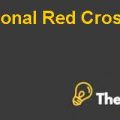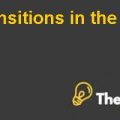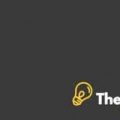
INTRODUCTION
Harlan Foundation was established in the 1953 by the Martin Harlan who was the wealthiest personin the Minneapolis city. He was the legitimate social worker who associated his life for the development of the Minneapolis city. He develops the trust for development and this trust developedvariedservices such as infant clinics, educational centers for special children, family counseling centers,a program for drug addicts, and rehabilitation center.
Harlan Foundation was also associated with the other social service providers those were recognized nationally. The Foundationwas operated on the basis of breakeven where there was no profit and no loss. The revenue of the foundation was coming from income that was earned throughHarlan’s bequest. The ravens had the major sources such as fees chargedfor clients, Clients contributions, and grants those were collectedon city, state, and federal level.
For the next year foundation wanted to start two activities for the disable children and these activities were summer camp and a seminar. The summer camp was only for the disabled children to ensure their mental growth and seminar was for the managers to help them arranging the social services.
Camp Harlan was undertaken last year through donation and was consisted on 30 acres area with the Frontlineon the lake. The camp building capacity in terms of comparing was 60 at one time. The Foundation planned to occupy this facility with the new summer activity in it for eight weeks. The foundation also decided to charge a suitable feefor the campers to recover the operating cost considering that, many of the campers cannotpay these fees and this could be supported from the donations.
Henry Coolidge, who was the vice president of the foundation’s finance department, he collected the information about the costing of the camp from the American Camping Association and hedecided to accommodate only 50 campers in the camp. This made in total campers of 400 campers per week. Henry Coolidge discussed the budget with the vice president of the foundation Sally Harris.
Sally Harris raised some question regarding the budgets that some of the items were not included in the budget such as central office of the foundation that would help and lead in organizing the camps and the financial aspects of the camping cost and revenues, and also about the marketing of the camping activity.
For the seminar activity, Harlan Foundation was planning to conduct the seminar in the upcoming fall in which the discussion would be made to the income tax legislation and other regulatory development that would impact the social services organizations. The seminar was organized because of the new income tax legislation as itaffects the contribution and donations made in the social welfare trusts and Harlan was deciding to help those welfare who were working on a small scale.
PROBLEM STATEMENT
Harlan Foundation was facing the challenge to organize the camping activities and these activities were provided with the minimal fees and those who cannot afford to pay these fees would be supported by the donations. To come up with the optimal fees that would be charges there were three questions that would be answered such as:
What weekly fee should be charged for campers?
Assuming a fee of $100, what is the break-even point of the seminar?
What fee should be charged for the seminar?
EVALUATION
To answer the above mentioned questions the analysis have been made on the given information in the case study such as:
The total participant of the seminar would be estimated is 30 and the seminar would be conducted in the local hotel. The charges of the hotel would be $200 as a rent charge and for the meal the hotel will charge $20 per person this also includes the refreshments any of the seminar attender would require. There are also the audio visual equipment charges that would be charged by the hotel if they provide and for that hotel will charge $100.
Harlan Foundation also arranges the instructor for the seminar and there will be two instructors who would be getting paid about $500 each. The hotel will also charge for the printing and mailing facilities for the promotional material and that would be charged around $900. The participant of the seminar would also get the notebook that contains the relevant material related to the seminar and each of that notebook will cost around $10 and that cost is the preparation cost of the notebook. The notebook would be further copied and 60 copies would be printed.On the hand, other incidental charges would also be charged by the hotel and these charges would be paid out of pocket that would be around $200.
These above mentioned cost would be incorporated in answering the above mentioned three questions as an input.................
This is just a sample partial case solution. Please place the order on the website to order your own originally done case solution.
Describes two situations that require different approaches to pricing decisions. Illustrates an important point about the prices, as well as the measurement of costs: different goals require different pricing principles and, therefore, the cost of different designs. Situation number one, an estimate of the total cost. Situation number 2, an estimate of differential costs in order to obtain the break-even number of units and the number of break-even is not the whole story, the management was also to consider the maintenance fee and income opportunity. "Hide
by Robert N. Anthony Source: The Crimson Group 3 pages. Publication Date: June 30, 2012. Prod. #: TCG213-PDF-ENG













